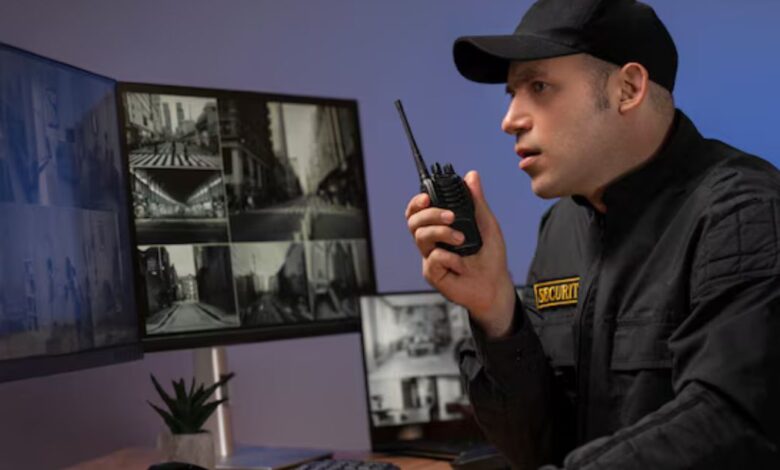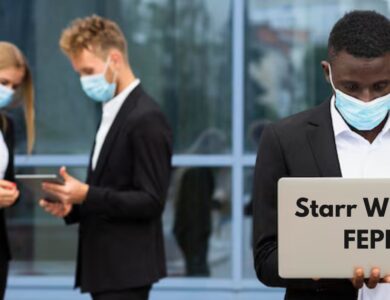Security Room: Essential Features and Best Practices for Maximum Safety

A security room is a core component of a comprehensive security system, acting as a central command center where all security operations are monitored and managed. Security rooms are often the nerve center for surveillance, communications, and response in buildings, campuses, or business facilities, and play a vital role in ensuring the safety of people, property, and information. From designing a functional layout to choosing the right technology, creating a secure and efficient security room involves several critical aspects. This guide explores essential features, design tips, and best practices for setting up an effective security room.
Importance of a Security Room in Modern Security
In today’s complex security landscape, security rooms are more than just a space for surveillance monitors. They provide a consolidated place for security personnel to monitor live feeds, access emergency communications, and manage real-time incidents. With rapid advancements in technology, security rooms help integrate multiple security systems—such as alarms, access control, and video surveillance—into a unified operation. This integration allows for swift responses to threats and contributes to better overall facility security.
Designing the Layout of a Security Room
Designing the layout of a security room requires careful consideration of space, equipment placement, and accessibility. The layout should be structured to provide maximum visibility and ease of use. A spacious room allows for the installation of multiple screens, communication devices, and necessary controls. Ergonomic design principles, such as adjustable desks, comfortable chairs, and accessible storage, are important to reduce fatigue for personnel who spend long hours monitoring the facility.
Choosing the Right Technology for Surveillance
Technology forms the backbone of an effective security room. High-definition monitors, reliable surveillance cameras, and advanced recording systems enable comprehensive monitoring of the premises. The selection of cameras should include a mix of indoor and outdoor types to cover all areas effectively. Video analytics, like facial recognition and motion detection, further enhance the functionality of a security room by enabling automated threat identification.
Setting Up Access Control Systems
An access control system is essential for restricting unauthorized entry to secure areas within a building. In a security room, this feature enables personnel to control access points and monitor visitor movements. Access control systems can range from basic card readers to biometric and facial recognition systems, depending on the level of security required. By implementing access control within the security room, the facility ensures only trained and authorized staff can manage security operations.
Real-Time Monitoring and Incident Response
The primary purpose of a security room is real-time monitoring of events to enable quick responses to incidents. Live feeds from surveillance cameras, integrated with alarm systems, allow security personnel to assess situations immediately. In cases of emergency, like fire or intrusion, the security team can activate protocols to ensure the safety of occupants and coordinate with local authorities if needed. Efficient incident response can help prevent property damage and ensure the safety of everyone in the vicinity.
Communication Systems for Enhanced Coordination
Communication is key in any security room. Integrated communication systems, such as two-way radios, intercoms, and direct lines to emergency services, allow security teams to coordinate effectively. In larger facilities, these systems enable seamless communication between different departments, helping in the swift execution of safety procedures. A robust communication setup also aids in coordinating evacuation processes and managing crowd control during emergencies.
Data Storage and Management Solutions
Security rooms generate massive amounts of data daily, from video footage to access logs. Proper data management solutions are essential to store and retrieve this information efficiently. Advanced storage systems, like cloud-based storage or Network Video Recorders (NVRs), ensure that data is securely backed up and accessible when needed. Implementing data encryption and regular data audits further enhance the security and reliability of stored information.
Ergonomic Considerations for Operator Comfort
Security personnel often work long shifts, which makes ergonomic considerations crucial for their comfort and efficiency. Adjustable desks, cushioned chairs, and optimal lighting conditions contribute to a comfortable working environment. It’s essential to have a climate-controlled room and minimize noise to reduce stress and fatigue among staff. Creating a comfortable workspace improves alertness, which is crucial in high-stakes monitoring roles.
Integration of Alarm and Alert Systems
An efficient security room integrates various alarm systems to provide alerts for fire, intrusions, and other emergencies. These alarm systems should be centralized within the security room, allowing operators to manage multiple alerts from one location. Automated alerts reduce the reaction time by immediately notifying personnel of specific threats, enabling them to take prompt action.
Video Wall Setup for Enhanced Visibility
A video wall is a valuable addition to any security room, as it allows operators to monitor multiple camera feeds simultaneously. The video wall should be positioned in a way that provides clear visibility for all personnel in the room. Adjustable brightness settings and anti-glare screens help in reducing eye strain. A well-configured video wall improves situational awareness, allowing personnel to detect potential threats more efficiently.
Importance of Cybersecurity Measures
Security rooms are increasingly vulnerable to cyber threats, especially with the integration of networked systems. Robust cybersecurity measures are essential to protect the integrity of data and prevent unauthorized access to sensitive information. Implementing firewalls, antivirus software, and regular system updates can protect the security room’s digital assets. Personnel should also be trained on cybersecurity best practices to avoid phishing attacks and other potential risks.
Training and Professional Development for Security Staff
To operate a security room effectively, personnel must receive proper training on equipment, incident response, and communication protocols. Continuous professional development programs ensure that staff remain updated on the latest security technologies and procedures. Training also helps in improving teamwork, allowing personnel to respond to emergencies with coordinated efforts.
Redundancy Systems for Fail-Safe Operations
Redundancy is crucial in a security room to ensure continuous operations in case of equipment failure or power outages. Backup power sources, such as generators and uninterruptible power supplies (UPS), allow the security room to function seamlessly during outages. Redundant communication lines and backup systems for critical equipment enhance the reliability of the security room, ensuring uninterrupted surveillance.
Monitoring Environmental Controls
Environmental controls, such as temperature, humidity, and air quality, play a critical role in maintaining the equipment and comfort of the security room. High temperatures can damage sensitive electronic equipment, while poor air quality may affect personnel health. A controlled environment with proper ventilation and temperature regulation ensures the longevity of equipment and promotes a healthy workspace.
Lighting and Visibility Considerations
Proper lighting is essential in a security room to reduce eye strain and maintain operator alertness. A balance of natural and artificial lighting, with adjustable intensity, creates a conducive environment for monitoring activities. Task lighting can be provided for specific workstations, and screens should be positioned to avoid reflections and glare, further enhancing visibility and reducing distractions.
Emergency Preparedness and Drills
Being prepared for emergencies is a fundamental part of security room operations. Regular drills and simulations help security personnel stay ready for various scenarios, including fire, intrusions, and natural disasters. Practicing emergency procedures ensures that the team is familiar with response protocols, helping reduce panic and enabling a swift, organized reaction during real incidents.
Conclusion
A well-designed security room is essential for any facility’s comprehensive security strategy. By incorporating the right technology, ergonomic designs, and proactive measures, a security room becomes a reliable command center for monitoring and managing incidents. Security rooms provide a centralized location where security staff can effectively monitor, communicate, and respond to emergencies. Investing in the right features and following best practices helps create a secure environment that safeguards people and assets.
FAQs
What is the primary purpose of a security room?
The primary purpose of a security room is to monitor and manage security operations within a facility, allowing security personnel to respond quickly to incidents and ensure the safety of people and property.
What equipment is typically found in a security room?
A security room generally includes surveillance cameras, monitors, communication systems, access control devices, and alarm systems. Depending on the facility’s requirements, additional equipment like video walls and data storage solutions may also be present.
Why is ergonomic design important in a security room?
Ergonomic design improves the comfort and efficiency of security personnel, who often work long shifts. Comfortable seating, proper lighting, and adjustable desks help reduce fatigue and maintain alertness.
How does cybersecurity play a role in a security room?
With networked systems in place, security rooms are vulnerable to cyber threats. Implementing robust cybersecurity measures protects sensitive data and prevents unauthorized access to security systems.
What are redundancy systems, and why are they important?
Redundancy systems, such as backup power and communication lines, ensure continuous operation of the security room during equipment failure or power outages. This reliability is crucial for maintaining uninterrupted security monitoring.



